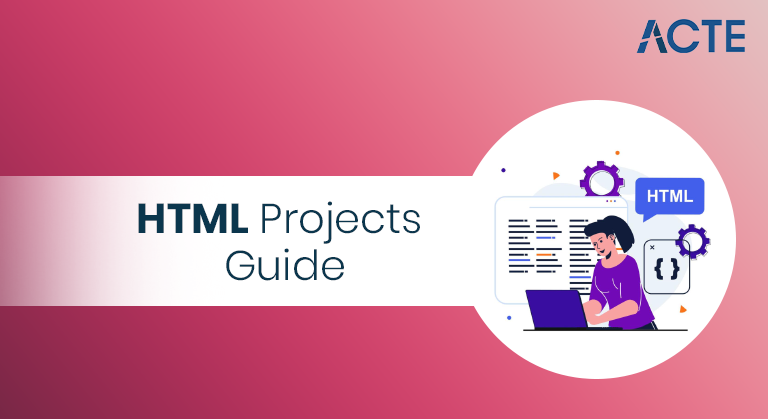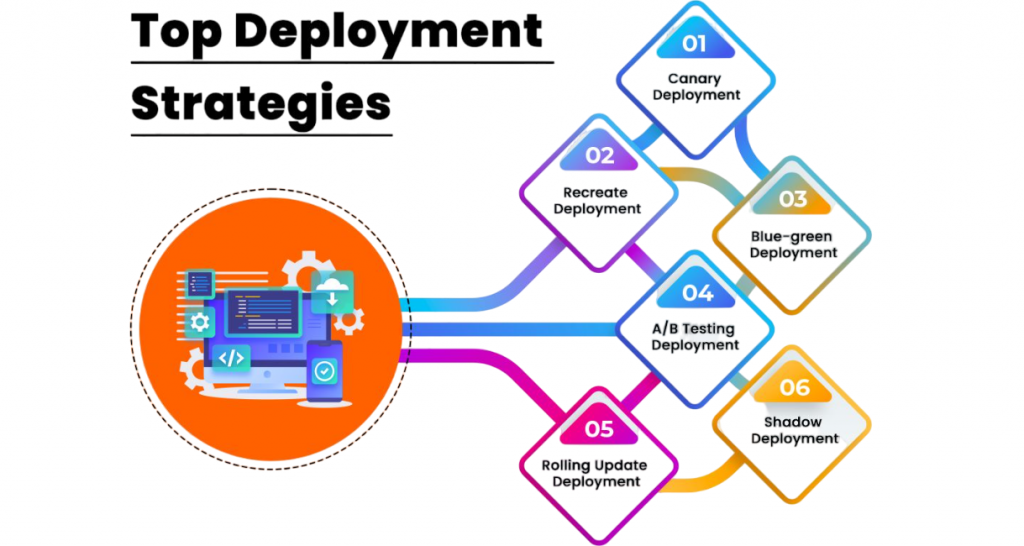
- Introduction to HTML
- Prerequisites for HTML Projects
- Basic Web Page Design
- Personal Portfolio Website
- Blog Page Layout
- HTML Forms Project
- Responsive Design with HTML & CSS
- HTML and JavaScript Integration
- Mini E-commerce Frontend
- Interactive Resume Template
- Tips for Project Deployment
- Conclusion
Introduction to HTML
HyperText Markup Language (HTML) is the standard markup language used to create and design documents displayed in a web browser. HTML structures the content on the web, allowing developers to create websites, applications, and user interfaces. Understanding HTML is the foundational step for anyone interested in web development, as it provides the framework upon which websites are built. To build on this foundation with backend integration and dynamic functionality, exploring Full Stack Training reveals how HTML works seamlessly with Python frameworks to create responsive, data-driven web applications. Whether you’re aiming to become a front-end developer, full-stack engineer, or UI/UX designer, mastering HTML is essential.
To Earn Your Full Stack Taining Course Certification, Gain Insights From Leading Web Developer Experts And Advance Your Career With ACTE’s Full Stack Developer Training Today!
Prerequisites for HTML Projects
Before starting HTML projects, it’s essential to understand some basic concepts. Begin with HTML tags and elements; they are the foundation of any web page. Get familiar with the document structure, which includes the head, body, and title sections. It’s important to know attributes and how to nest elements to create organized code. To understand how structured design principles apply beyond web development, exploring Virtual Instrumentation using Labview reveals how LabVIEW’s graphical programming environment uses modular blocks, nested logic, and attribute-driven controls to build scalable measurement and automation systems. Basic CSS is needed to style your web pages, but some knowledge of JavaScript can improve interactivity and make your projects more engaging. Using code editors like VS Code or Sublime Text can provide a smoother coding experience.
Basic Web Page Design
A basic web page design is the simplest project that helps beginners get accustomed to the structure and syntax of HTML. This project can include headings, paragraphs, images, links, and lists. You can also embed videos, apply basic styling with inline CSS, and create simple navigation menus. To scale such projects with build automation and dependency management, exploring Gradle vs Maven reveals how these tools streamline compilation, packaging, and deployment workflows making development faster and more maintainable.
Example elements to include:
- Header with a title.
- Navigation bar with links.
- Main section with paragraphs and images.
- Footer with contact information.
This type of project allows beginners to see how different elements appear on the page and understand how HTML tags function together to build a cohesive layout.
Would You Like to Know More About Full Stack Developer Training Course? Sign Up For Our Full Stack Training Course Now!
Personal Portfolio Website
Creating a personal portfolio is one of the most common and useful HTML projects. It serves a dual purpose: helping you practice your HTML skills while also building something that showcases your work to potential employers or clients. To simulate loading effects or timed transitions within such projects, exploring Python Sleep Method reveals how developers use controlled delays to enhance user experience, manage asynchronous tasks, and coordinate timed executions in Python-based applications.
Key sections to include:
- Introduction/About Me section.
- Skills and technologies used.
- Project gallery with descriptions.
- Resume download link.
- Contact form.
This project introduces form elements, media embedding, hyperlinks, and semantic HTML. It also gives you the opportunity to experiment with layout structures and design principles using HTML and CSS.
Blog Page Layout
Creating a blog layout is a great way for beginners to learn key web development concepts. A well-structured blog page usually includes a list of blog post previews. Each preview shows the title, a brief description, the author’s name, the publication date, and a “Read More” link to encourage further exploration. Adding a sidebar with categories or tags can improve user navigation and help visitors easily find related posts. Implementing pagination links helps manage content overflow and makes it simpler to browse through multiple posts. To learn how these UI enhancements integrate with backend logic and dynamic content loading, exploring Full Stack Training reveals how Python frameworks support modular layouts, efficient routing, and scalable content management across full-stack web applications. Additionally, using headers and footers consistently reinforces the site’s structure.
Are You Interested in Learning More About Full Stack Training Course? Sign Up For Our Full Stack Training Course Today!
HTML Forms Project
Creating effective forms is important for user interaction on websites. An HTML forms project helps you learn how to gather user input and organize forms neatly. Key elements to include are text fields, radio buttons, checkboxes, drop-down menus, text areas, and submit or reset buttons. You can design different types of forms, such as a contact form, survey form, or registration page. To choose the best language for handling form data, validation, and backend integration, exploring Kotlin vs Python reveals how Kotlin’s type safety and Android-first approach compare with Python’s simplicity and web-friendly frameworks helping developers align form functionality with platform goals. To improve functionality, think about adding validation features using HTML attributes like “required” or “pattern.” This ensures that users provide the necessary information and improves the overall user experience. By mastering HTML forms project concepts, you will be on your way to creating engaging and interactive web forms.
Responsive Design with HTML & CSS
Responsive design ensures that your webpage looks good on all devices, desktops, tablets, and smartphones. This project involves creating a layout that adjusts based on screen size. To extend such front-end adaptability into scalable backend systems, exploring Spring Boot vs Spring MVC reveals how these frameworks differ in configuration, deployment speed, and modularity helping developers choose the right approach for building responsive full-stack applications.

Techniques to implement:
- Media queries in CSS
- Flexible grid systems
- Relative units like percentages or em/rem
- Viewport meta tag
This project allows you to understand how HTML structures must be designed in conjunction with CSS to accommodate responsiveness, making your websites accessible and mobile-friendly.
Gain Your Master’s Certification in Full Stack Developer Training by Enrolling in Our Full Stack Developer Master Program Training Course Now!
HTML and JavaScript Integration
Combining HTML with JavaScript introduces interactivity into your projects. JavaScript can manipulate HTML elements, respond to user actions, and update the DOM dynamically. To understand how mastering such front-end skills contributes to career growth, exploring Important Data Structures and Algorithms reveals how proficiency in dynamic web technologies influences earning potential, job roles, and advancement opportunities in the tech industry.
Example project ideas:
- To-do list with add/remove functionality
- Interactive calculator
- Light/dark mode toggle
- Image slider or carousel
These types of projects help you understand how to use JavaScript to select HTML elements, respond to events, and change the content or styling dynamically.
Preparing for Full Stack Training Job Interviews? Have a Look at Our Blog on Full Stack Developer Interview Questions and Answers To Ace Your Interview!
Mini E-commerce Frontend
Creating a mini e-commerce site is a great way to get into web development using just HTML and CSS. You can also add JavaScript for extra interactivity. Start your project with an attractive homepage that showcases a selection of products. Each product should have its own page that includes images, descriptions, and prices. To build and manage such dynamic, user-friendly interfaces alongside robust backend systems, exploring Skills Needed for Full Stack Developers reveals how proficiency in front-end technologies, server-side programming, databases, and deployment tools empowers developers to deliver complete, scalable web solutions. As users browse your site, they can easily add items to their cart. This will take them to a summary page where they can review their chosen products. Finally, include a simple checkout form to collect payment details. While this project does not include backend integration.
Interactive Resume Template
Designing an interactive resume using HTML is a practical and creative project. You can include clickable tabs or sections that display content like education, experience, and skills without navigating to different pages. To enhance such projects with backend functionality or real-time interactivity, exploring Node.js Installation on Windows and Ubuntu reveals how setting up Node.js enables developers to build dynamic, server-powered applications that integrate seamlessly with modern front-end designs.
Key components:
- Profile photo
- Objective summary
- Accordion or tab layout for content
- Links to GitHub, LinkedIn, or portfolio
- Downloadable PDF version
This project helps you practice layout design and reinforces your understanding of HTML structuring for real-world applications.
Tips for Project Deployment
After completing your HTML project, deploying it online helps you share your work and build a portfolio. To extend functionality with backend services or Python-based tools, exploring What is pip reveals how Python’s package installer simplifies dependency management, allowing developers to integrate libraries for databases, APIs, and deployment automation with ease.

Steps to deploy:
- Test responsiveness and browser compatibility
- Optimize images and assets for faster load times
- Use clean and semantic HTML
- Host with GitHub Pages, Netlify, or Vercel
- Create a README file with project details
Proper deployment makes your project accessible to others and demonstrates your skills to potential employers. Maintaining good coding practices during project creation and deployment can greatly enhance your credibility.
Conclusion
HTML projects are the stepping stones to becoming a competent web developer. From basic web pages to interactive resumes and mini e-commerce sites, each project builds your confidence and sharpens your skills. As you progress, integrating CSS and JavaScript with HTML will help you create fully functional and visually appealing websites. To master this integration across the entire development stack, exploring Full Stack Training reveals how Python-based frameworks complement frontend technologies enabling developers to build responsive, dynamic web applications with seamless backend connectivity. Start small, stay consistent, and use every project as an opportunity to learn and grow in the world of web development.





